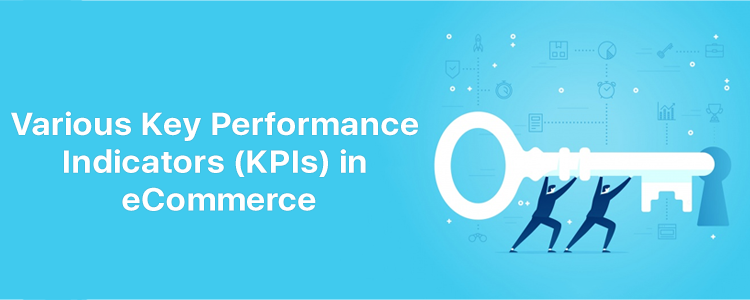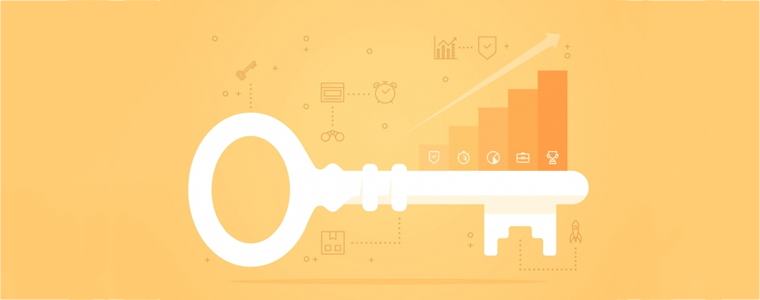Key Performance Indicators or KPIs are used to measure the progress of an intended result or you can they measure a business’ performance based on the objectives and target. Evaluating KPIs helps companies identify the progress towards marketing, sales, and many other things.
Difference between Metric and KPI
KPIs tell you how effective you are at achieving your objectives whereas metric track the status of a process. Put simply, KPIs reflect the result while the metric reflects the process.
Let’s understand the various key performance indicators in eCommerce. In this article, I have specified key performance metrics for Sales, Marketing (including email marketing) and Facebook Marketing.
Key Performance Indicators for Sales
Sales KPIs measure how your business is doing in terms of conversions and revenue. It includes:
1. Sales
E-retailers can monitor the total sales by hour, day, week, month, or year.
2. Average Order Value
Also called average order size or average purchase value, it tells you how much a customer spends on a single order.
3. Average Profit Margin
This KPI helps sales team evaluate the profit margin over a period of time across products and services.
4. Conversion Rate
It is the rate at which conversions are happening on your website. It can be assessed by dividing the total number of visitors to total conversions.
5. Customer Lifetime Value
This KPI tells you how much a customer is expected to spend on your products or services over their lifetime. This requires strengthening the relationship with customers and building customer loyalty.
6. Retention and Churn Rate
The retention rate tells you the percentage of customers you have retained over a period while the churn rate is the percentage of customers leaving your brand over a period.
7. Cart Abandonment Rate
This KPI tells how many users are adding the product to the cart but not purchasing it. A high cart abandonment rate can have many reasons including an intricate checkout.
8. Product Affinity
It tells you about the products that are purchased together, helping you improve your cross-selling strategies.
9. Customer Acquisition Cost
This KPI tells you how much amount you are spending on acquiring a new customer.
10. Gross Profit
This is calculated by subtracting the total cost of goods sold from total sales.
Key Performance Indicators for Marketing
1. Website Traffic
It refers to the total number of users visiting your website.
2. Average Time on Site
It provides data on the time spent by a visitor on your website and web pages.
3. Bounce Rate
It is the percentage of visitors who exit from your website after viewing only one page. Higher bounce rate is an indication that your homepage is not appealing enough to generate curiosity in the visitors to explore further web pages.
4. Average Session Duration
It tells you the average time a user spends on your website on a single visit.
5. Traffic Source
The traffic source tells you where most of your visitors are coming from, for example, Google (organic), social media, paid ads, etc.
6. Email Open Rate
It tells you the percentage of your email subscribers who open your email. If you have a low email open rate, you can try to improve it by testing different subject lines, removing inactive subscribers, or even sending emails at a different time.
7. Email Click-Through Rate
This marketing KPI tells you how many subscribers are clicking on the inside link after opening your email. This is important because if they are not clicking on the link, you won’t be able to drive them to your website.
8. Unsubscribe Rate
It tells you the percentage of subscribers who unsubscribed to your emails.
9. Social Media Engagement
It provides you insights on how your followers are interacting with your brand on social media.
10. Clicks
This KPI tells you the total number of clicks on the link and can be measured for website, social media, email, ads, etc.
Key Performance Indicators for Facebook Marketing
1. Audience Profile
It provides you with insights on your Facebook followers. You can know which gender is more attracted to your brand, which age group most of your followers belong to, which location does most of your followers belong to, etc. This helps you analyze your target audience.
2. Growth
This KPI tells you how quickly your brand is growing over Facebook.
3. Reach
It tells you how many people have seen your post or Ad on the platform.
4. Engagement
Engagement tells you how often people are interacting with your brand. Low engagement is a sign of boring content.
5. Leads
It tells how many users filled out your lead form be it through paid ads or organic reach.
6. Conversions
This KPI tells you how many leads got converted.
7. Response Rate
It tells you how quickly you are responding to your messages. Facebook shows the response time for pages.
There are many performance indicators in eCommerce. Once you have set your objectives and selected KPIs, monitoring them will become your daily routine.





